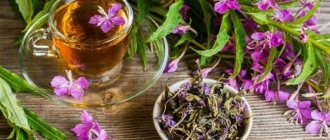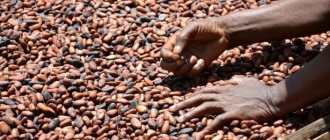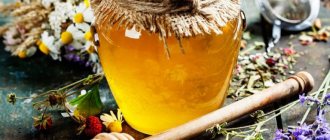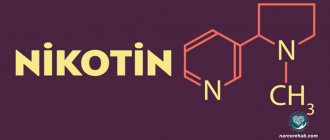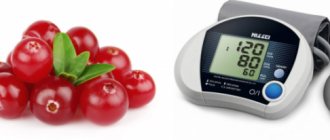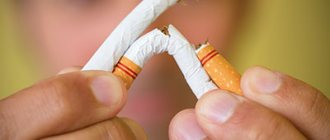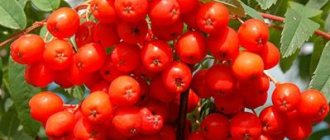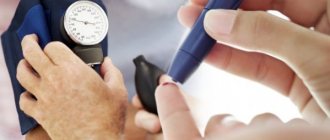Complex treatment of hypertension includes not only medication, but also diet therapy, which consists of special foods that have a beneficial effect on the activity of the vascular system and myocardium. Thus, in alternative medicine, spices are widely used to normalize blood pressure. One of the most effective spices is cinnamon, as it helps hypertensive patients fight chronic stress, reduces nervousness and increases resistance to physical stress. Cinnamon for blood pressure is a universal remedy that helps reduce the risk of developing complications of arterial hypertension. At what blood pressure levels can you take cinnamon and what are the contraindications to its use?
How does it affect blood pressure?
Most lovers of the aromatic spice are interested in the question of whether cinnamon increases or decreases blood pressure. According to research, if you regularly take cinnamon, you can significantly reduce blood pressure. The seasoning can not be used in its pure form, but can be added to prepared dishes and drinks.
How does the spice work for hypotension and can it increase blood pressure or not? With low blood pressure, the use of spices is allowed, but in minimal quantities. A pinch of cinnamon added to tea in the morning will raise your vitality and significantly invigorate you. As a rule, hypotensive people experience a constant feeling of fatigue, loss of strength and reduced performance. Taking a natural remedy will increase the tone of the body and restore strength, but it does not increase blood pressure.
Can it cause harm?
If you use cinnamon excessively, you can harm yourself. The spice contains coumarin and safrole. If you take cinnamon in large quantities, then due to the effects of its components, you can cause an inflammatory process in the liver.
So, due to excessive excitability caused by spice, the following phenomena can be observed:
- Increased heart rate;
- Intestinal peristalsis increases;
- Breathing quickens;
- Hyperhidrosis;
- Depression and drowsiness.
Possible contraindications
Like any medicinal product, Chinese cinnamon also has its contraindications, so some categories of people should take it with caution. Not recommended:
- pregnant women, since in large doses it can cause miscarriage.
- people suffering from peptic ulcer disease.
- people suffering from allergies. Due to its protein content, cinnamon can cause respiratory distress in humans because the proteins are very similar to some types of pollen allergens.
- take against the background of analgesics or aspirin.
- use for bleeding.
- Take with increased body heat.
The Americans once conducted a study that showed that even chewing gum containing the taste of cinnamon caused a skin disease in a person’s mouth.
Another case was recorded when irritation formed on the tongue, which later developed into cancer. Therefore, allergy sufferers should avoid cinnamon. They decide for themselves whether it will be useful to them or not.
Are there any restrictions?
If an adult weighing 60-65 kg consumes up to 5 g of Chinese cinnamon per day, then the daily dose of coumarin will be exceeded. Therefore, the spice for cooking or baking is added in very small quantities. A child weighing 15 kg per day can be allowed to eat no more than 100 g of gingerbread with the addition of cinnamon spice.
And also read on our website: List of prohibited foods that you should not eat if you have hypertension
The daily dose of spicy cinnamon should not exceed about 3 pinches, which is about half a teaspoon. Those people who use cinnamon recipes for high blood pressure must also follow the dosage.
If you exceed the daily norm, cinnamon can cause exacerbation of migraines, stomach upset, flatulence and other side effects.
What happens if you take it with low blood pressure?
Many people wonder whether it is possible to add cinnamon as a spice at low blood pressure. The answer is yes, but in small doses. For example, if a person has difficulty waking up in the morning, then you can add a pinch of cinnamon with a delicious smell to the aromatic coffee for vigor. The main thing is not to overdo it with the dose, and vigor for the whole day will be ensured.
Healing properties for hypertension
The spice is a brown powder obtained from the bark of a tropical evergreen tree. Thanks to the large number of essential oils in its composition, most of the beneficial effects are achieved. Experts have proven that when used correctly, cinnamon has a beneficial effect on blood pressure.
The ingredients of the spice are:
- microelements;
- vitamins B, C, E;
- tannins;
- cinnamic acid;
- tannins;
- antioxidants;
- phellandrene;
- wood resins.
Thanks to the active components of the spice, antibacterial, tonic, and antithrombic effects on the body are manifested. Hypertension arising from diabetes mellitus is an indication for taking a natural remedy, since it helps normalize glucose and increases cell tolerance to insulin.
By including cinnamon in the diet of hypertensive patients, you can achieve a smooth hypotensive effect
The product is a powerful natural antioxidant, as it reduces the risk of cerebral atherosclerosis and prevents the formation of blood clots in the lumen of the coronary arteries. With regular use, the tone of vascular smooth muscles increases, the internal diameter of arterioles expands, and metabolic reactions also accelerate. The main therapeutic effect in hypertension is the ability to influence the rheological properties of the blood, as a result of which it is possible to prevent serious complications of the disease, namely the formation of intravascular blood clots, which cause aggravation of the pathology.
How to choose the right quality cinnamon
The quality of cinnamon directly affects its healing properties. Cinnamon is an evergreen tree that grows primarily in the tropics. Its dried bark is used for confectionery and medicinal purposes. It is sold in the form of rolled tubes or immediately in a ground state. When choosing cinnamon in the form of tubes, you need to proceed from their appearance and richness of aroma.
- The best quality spice is obtained from trees growing on the island of Ceylon. The dried bark tubes have a strong, rich aroma and easily crumble when pressed with your fingers. The color is light brown and orange.
- A cheap analogue of high-quality cinnamon is obtained from a Chinese tree. The tubes have such a rich aroma, and their color is closer to red-brown. They do not crumble because they have a stronger structure. This cinnamon (also called cassia) has a less intense taste, and its medicinal value is noticeably lower.
Let's conduct an experiment
To understand for sure how high-quality the cinnamon you bought, you can do a simple experiment: drop an alcohol solution of iodine and see the reaction. If the sticks or powder have acquired a dark blue color, then the cinnamon contains a lot of starch, which is typical for cassia.
Another option is to brew cinnamon powder with boiling water, let it brew for half an hour and check the consistency. If it is closer to jelly (mucous), then it is also cassia.
Thus, in the questions of whether cinnamon helps with hypertension, whether it increases blood pressure, you can put an end to it and include this spice in the list of home remedies for every hypertensive person.
It should also be borne in mind that cinnamon is an aid in the fight against high blood pressure. It should not replace the main drug prescribed by the doctor.
Contraindications for use
In addition to its healing properties, the spice has some contraindications for use:
- Internal bleeding and menstruation (the drug reduces the viscous property of blood).
- The presence of pathologies of the kidneys and liver (the substance coumarin contained in the spice, when taken systematically, can cause a deterioration in the functional state of already affected organs).
- Pregnancy (the risk of increased uterine contractility increases).
- Stomach ulcer.
- A state of hyperactivity and increased excitability of the nervous system.
- Children under three years of age.
- Period of drug therapy (may affect the chemical structure of the drug).
Excessive consumption of spices can cause an allergic reaction, manifested by rashes on the skin.
Healing composition and effect on the body
| Name | Effect on the body |
| Cinnamaldehyde | Affects glucose metabolism, increases insulin sensitivity, reduces the risk of type II diabetes mellitus |
| Trans-cinnamic acid | Short-term lowers blood pressure without blocking the neuromuscular junction |
| Evengol | Promotes rapid removal of harmful cholesterol from the body |
| Condensed tannins | Designed to form bonds with proteins and polysaccharides |
Effect of spice on hypertension
Hypertension is a dangerous pathology of the vascular system, as it brings many complications that can lead to death. The disease increases the risk of developing atherosclerosis, stroke and heart attack. Thanks to the healing properties of cinnamon, the consequences of the disease can be prevented. The plant substances contained in the spice activate metabolism, regulating the speed of metabolic reactions. The formation of lipid deposits in the vessels is reduced, due to which blood circulation is normalized, preventing constant changes in blood pressure.
To lower blood pressure, hypertensive patients need to take 1 teaspoon of the spice daily, combining it with meals
The spice has a complex effect on the general condition of hypertensive patients, eliminating the main manifestations of arterial hypertension. It helps relieve headaches, discomfort in the chest, and also reduces swelling as a result of the removal of sodium ions and salts.
Cinnamon has a therapeutic effect on hypertension:
- improves the activity of brain cells;
- improves memory quality;
- reduces the level of “bad” cholesterol in the body;
- stabilizes blood pressure;
- normalizes body weight.
Due to a prolonged increase in blood pressure, the activity of the myocardium is disrupted; a large amount of potassium is needed to restore its function. To improve the absorption of potassium, the body uses magnesium, a deficiency of which causes calcium deposition on the vascular walls, provoking the formation of blood clots. Therefore, cinnamon is useful for disorders of the heart muscle, as it replenishes the deficiency of microelements in the body.
Side effects and contraindications
Excessive consumption of cinnamon can lead to some side effects. For example, in excessive doses it can cause some lethargy and apathy, and also lead to headaches.
The following categories of people should use the spice with caution:
- Pregnant women (especially in the first 12 weeks of pregnancy).
- Persons with chronic liver diseases.
- Those who have an individual intolerance to any component of cinnamon.
The benefits and harms of cinnamon for hypertension have been studied quite well, so if side effects occur, you should definitely stop treatment and consult a doctor.
Recommendations for admission
To achieve a therapeutic effect and reduce the risk of side effects when consuming spices, you must adhere to the dosage and rules of administration. Thus, before starting therapy, it is recommended to consult with your doctor to identify possible contraindications.
The following are the main rules for using cinnamon for high blood pressure:
- The daily norm is no more than 5 grams. spices, it is recommended to divide the dose into several doses.
- To normalize blood pressure levels, the spice must be consumed in the morning to start metabolic processes.
- To achieve a pronounced hypotensive effect, cinnamon should be mixed with honey. With the combination of these components, strengthening of the vascular system and myocardium is observed.
Patients should adhere to the recommended dose of the drug, since the burning sensation is caused by substances that can provoke an attack of ulcers and swelling of the larynx. If a burning sensation occurs, you should drink a small amount of milk.
If the recommendations are followed, there is a rapid decrease in blood pressure within 14 days.
Important! The therapeutic course is 1 month, during which cinnamon is taken daily, then you need to take a two-week break, after which you can continue treatment.
Blood Pressure Tablets: Part II
We continue the series of articles devoted to one of the most common ailments in the world, which reduces the quality of life of millions of our compatriots - high blood pressure. In the last article, we looked in detail at what blood pressure is and why it rises too much. We also studied the “simplest” class of drugs for the treatment of arterial hypertension – diuretics. Today we will talk about the basics of antihypertensive therapy, about more “complex” drugs, without which other drugs most likely will not help much. Meet ACE inhibitors and angiotensin II receptor blockers.
Why does blood pressure rise?
When the heart forcefully pushes blood out of itself, it rushes into the arteries, then into the arterioles (medium-sized vessels), and then into the small capillaries. The force of the heart muscle in combination with the resistance of the blood vessels (each of them has its own limited diameter) creates pressure. As an illustration, we can use the heating system of apartment buildings: in order for hot water to circulate in the radiators of apartments on the tenth floor, you need to “push it there”, creating strong pressure. This is why a faulty radiator at the height of the heating season is a disaster: boiling water spurts out, and there is no way to contain it unless you turn off the central valve outside the apartment.
Blood pressure is called arterial pressure according to the location where the indicators are “measured” - this is easiest to do on large arteries. The blood pressure (BP) indicator consists of two numbers - normally it is 120/80 mmHg. Art. The first number means the pressure of the blood in the artery at the “exit” of the heart (the so-called systolic blood pressure), and the second – the pressure of the blood flow at the “entrance” of the heart (diastolic blood pressure).
All processes in the human body are cascades of chemical reactions. One reaction triggers another, which triggers the next, and so on until the final result. Then the cycle repeats. Over time, under the influence of a number of external or internal factors, reaction cascades may be interrupted or distorted. This is how dysfunctions arise, some of which are considered deviations from the norm (pathologies), while others are not (for example, aging).
The blood pressure regulation system is no exception. The renin-angiotensin-aldosterone system (RAAS) is a complex cascade of biochemical reactions that involves many organs and tissues of the body. But the main “actors” of this process are the liver, kidneys and lungs.
It all starts with the kidneys producing a special enzyme - renin.
It is released in response to a number of “alarm signals.” These include a decrease in intrarenal pressure and a decrease in the delivery of sodium and chlorine to the kidneys (since they come from the blood, this means that the blood moves less intensively). Another important “wake-up call” for the kidneys is hypoxia (lack of oxygen), which is especially dangerous for the brain. As you know, it is the blood that carries oxygen throughout the body.
The kidneys release the enzyme renin into the bloodstream, where it meets the constantly circulating protein angiotensinogen (produced by the liver). These two react with each other to form a special hormone - angiotensin I.
Angiotensin I itself is an inert substance, that is, it doesn’t really “do anything.” But then it collides in the bloodstream with angiotensin-converting enzyme (ACE), which is formed in the lungs. As a result of their interaction, an active form is formed, angiotensin II - a powerful vasoconstrictor. And the narrower the lumen of the vessels, the higher the pressure in them.
In addition, angiotensin II enhances the synthesis of the adrenal hormone aldosterone. This substance directly affects blood pressure by regulating the exchange of potassium, sodium and fluid in vascular cells. The diameter of the lumen of blood vessels also depends on the concentration of these elements.
Angiotensin-converting enzyme (ACE) inhibitors
Once in the blood, these substances attach to the catalytic fragment of ACE, blocking the possibility of its connection with angiotensin I. The catalytic fragment of the enzyme molecule is its “active” part, responsible for a specific chemical reaction. There is no reaction - angiotensin remains in an inert form - pressure does not increase.
ACE inhibitors include drugs such as: enalapril, zofenopril, captopril, lisinopril, perindopril, ramipril, fosinopril and quinapril.
In addition to their main effect, ACE inhibitors increase the sensitivity of body tissues to insulin and thereby improve the absorption of glucose.
For all their advantages (efficacy and optimal safety profile), drugs of this class are distinguished by one not entirely pleasant side effect: quite often (up to 10% of cases) a dry cough develops while taking them.
Angiotensin II receptor blockers
The newest group of drugs for the treatment of arterial hypertension. In order to understand how they work, it is necessary to remember the “key and lock” principle. Complementarity is one of the functional foundations of biochemistry. She, in particular, answers a reasonable question: “How does the medicine know where my sore spot is?” The whole point is that the substances in our body react with each other not chaotically and not as expected, but because at the level of molecular structure they fit together like a key to a lock. For example, body cells have a huge number of different receptors. Each receptor reacts only with a specific substance or class of substances.
So in the smooth muscle cells of blood vessels there are receptors for angiotensin II. Without them, the cells simply would not “recognize” the hormone, and it would not be able to join them.
Angiotensin II receptor blockers (ARBs), as the name suggests, attach to receptors on cells and prevent the hormone from doing the same. You can't fit two keys into one lock. Thus, ARBs “deceive” the cells and do not allow angiotensin II to take its “rightful” place.
Examples of such drugs include valsartan, azilsartan medoxomil, irbesartan, candesartan, losartan, olmesartan medoxomil, telmisartan and eprosartan.
Unlike ACEIs, ARBs do not cause coughing and generally do not have serious side effects.
How to take blood pressure pills
In most cases, ACEIs and ARBs are recommended to be taken on an empty stomach one hour before meals.
In addition, we strongly recommend following the dosage regimen specified in the doctor's prescription or instructions for the drug. Both the effectiveness and safety of the drug in each specific clinical case depend on this.
It also makes sense to reduce the influence of risk factors for arterial hypertension: move more, and also not get carried away with fatty and highly salty foods. Treat yourself competently and be healthy!
Mark Volkov, editor of the online magazine for pharmacists and medical workers “Katren-Style”
Photo depositphotos.com The author’s opinion may not coincide with the opinion of the editors
Popular recipes
Long-term use of antihypertensive drugs can cause an addictive effect, so hypertensive patients resort to traditional medicine, which includes a large number of recipes for high blood pressure using cinnamon. However, due to the specific taste qualities, not everyone likes the seasoning, which makes it impossible to use it in its pure form. Therefore, many patients resort to recipes where the spice is combined with other products that improve its taste and benefits.
Kefir drink
Kefir with cinnamon for blood pressure is intended to relieve symptoms of hypertension, as well as restore intestinal microflora.
Recipe:
- Add a pinch of cinnamon powder to 250 ml of kefir.
- Leave for 30 minutes to allow the product to swell.
- The mixture must be drunk in full before meals.
This drink is a good tonic, increases the vitality of the body and restores physiological blood pressure levels. To enhance the effectiveness, you can add a small amount of chopped ginger.
Medicinal tea
A hot drink will help with hypertension, strengthening the walls of the arteries, lowering cholesterol levels, and drinking tea is also indicated for low vitality. You can prepare the drink with the addition of citrus fruits or green apple. To do this, you need to brew black tea, adding a pinch of spice and a teaspoon of grated lemon skin. Cover the container and leave for 10 minutes.
Honey remedy
Cinnamon with honey is a universal remedy aimed at correcting health by strengthening the immune system, restoring the psycho-emotional sphere, and normalizing cardiac and vascular activity.
Honey enhances the effect of the spice
To prepare the remedy you need to mix 2 tbsp. l. flower honey with 1 tsp. cinnamon, mix, take a teaspoon before meals throughout the day. The therapeutic course is 10 days, after which a break is taken.
Thus, cinnamon is a universal product that allows not only to normalize blood pressure, but also to prevent the possible consequences of hypertension. However, only high-quality and fresh product has healing properties, so when choosing it you should be especially careful and selective.
Effect on blood pressure
The most common reason why a person's blood pressure increases is atherosclerotic plaques. They are formed due to the accumulation of cholesterol on the walls of blood vessels. Plaques gradually narrow the lumen in the vessels, which further interferes with normal blood flow. All this leads to heart disease: stroke, heart attack and other complications.
Based on cinnamon spice in folk medicine, there are many excellent recipes that help regulate blood pressure or cope with the primary symptoms of hypertension.
It has been scientifically proven that one dose of cinnamon can reduce blood pressure by 2 mmHg.
When conducting research, it turned out that in order to completely normalize it, the patient needed to take a decoction of cinnamon or kefir with ground cinnamon spice for 16 days.
As you can see, the spice can easily cope with high blood pressure, but people suffering from excessively high hypertension should not refuse to take medications. Therapeutic therapy can be complex. It is best to take cinnamon as a preventive measure.
How to use for hypertension?
It is no secret that frequent use of drug treatment can cause addiction in the body, so a break is necessary. To prevent the disease from starting, at this time you can use alternative treatment - use the recommendations of folk wisdom. For example, choose the appropriate recipe and prepare a medicinal potion, so as not to be tormented by the question: does cinnamon lower blood pressure or not?
With kefir
The most relevant use of a honey product with kefir is for people suffering from extra pounds. But this drink is not the least important in the treatment of high blood pressure.
The recipe is simple: pour kefir into a glass, add cinnamon spice (1 tsp), stir, let it brew for 20 minutes and drink. It is advisable to drink the mixture at night. Side effects can only be observed in the intestines.
To achieve the desired result, you need to take the mixture every day for a month without skipping.
If it is difficult to drink a glass of kefir, you can divide it into 2 servings. If desired, you can replace kefir with any other fermented milk product.
With honey
For high blood pressure, it is useful to combine a beekeeping product with cinnamon spice. This mixture has a beneficial effect on the body. In combination with spice, honey exhibits its miraculous properties even more beautifully in terms of cleansing blood vessels and functioning of the cardiovascular system.
And also read on our website: How beets affect blood pressure - increases or decreases it, as well as recipes for hypertension
The recipe itself is quite simple: in the morning on an empty stomach you should take a spoonful of honey (1 tsp), sprinkled with cinnamon spice (on the tip of a knife). Drug therapy turns out to be both useful and tasty.
To obtain a positive result, it is recommended to take the recipe in courses. The minimum course of therapy is two weeks, in more complex situations 3-4 weeks. Reviews about the treatment method are the most positive.
Remember that the effectiveness of therapy does not always depend on an expensive drug. Sometimes handy spices can help.
With tea
Brew the tea you prefer to drink in the morning in the usual way. Add a little cinnamon spice (on the tip of a knife) and a slice of citrus to it. Let it brew a little and you can drink.
Course 2 times/day for 2-4 weeks. After this, you will notice that your high blood pressure has returned to normal.
Remember that ground cinnamon will be able to develop its properties faster than the one in cinnamon sticks.

